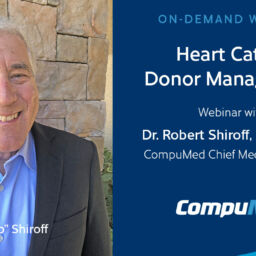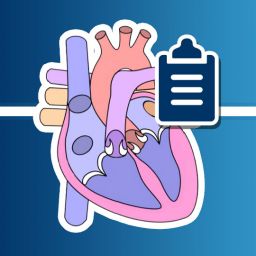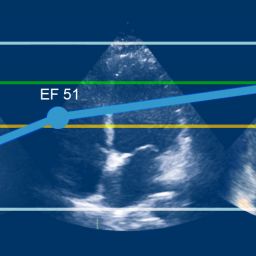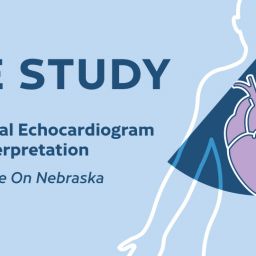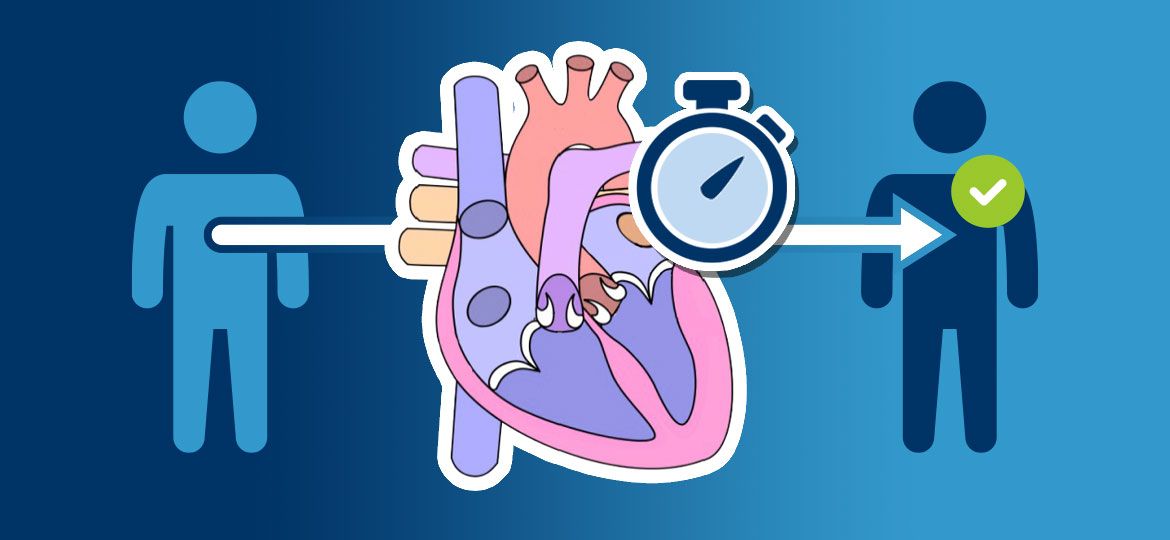
In Part Two of our two-part blog series on heart caths and donor management, we’ll take a closer look at how collecting and sharing this data promptly, with the help of platforms such as CompuMed, can help transplant surgeons say “yes” to a donor heart with confidence—and faster.
When it comes to heart transplantation, organ procurement teams know all too well that timing is critical. Transplant surgeons often need to make decisions quickly to ensure the best outcome for the donor heart and its intended recipient. Having comprehensive, accurate information about the donor heart’s function is essential, and cath lab pressure data plays a significant role in providing that information.
What is cath lab pressure data, and why does it matter?
Cardiac catheterization is a procedure that involves inserting a catheter (a thin, flexible tube) into a blood vessel and guiding it toward the heart.
Cath lab pressure data is a collection of measurements of pressure in the heart’s chambers that assess its function. These measurements can include:
- Right atrial pressure (RA): Measures the pressure in the right atrium, which reflects the amount of blood returning to the heart (also called central venous pressure).
- Right ventricular pressure (RV): The pressure in the right ventricle, which is responsible for pumping blood to the lungs.
- Pulmonary artery pressure (PA): The pressure in the pulmonary artery, which carries blood from the right ventricle to the lungs. This measurement helps assess how well blood is flowing through the lungs.
- Pulmonary capillary wedge pressure (PCWP) or left atrial pressure: An indirect measure of the pressure in the left atrium, providing insight into left heart function and fluid status.
- Aortic pressure (AoP): Measures the pressure in the aorta, which is the main artery that carries blood from the left ventricle to the rest of the body. It reflects the heart’s ability to pump blood effectively.
- Cardiac output (CO): This is the amount of blood the heart pumps in a minute. It reflects how efficiently the heart is working.
- Saturation levels (SATs): Measures oxygen levels in the blood, particularly from the pulmonary artery, right atrium and central aorta, and ensures there is no shunt lesion.

For transplant surgeons, these measurements are critical for assessing a donor heart’s function and can reveal issues that might otherwise go undetected. For example, elevated or abnormal PA pressure readings can be a sign of pulmonary hypertension, which could affect whether a heart or lungs can be transplanted.
“The transplant surgeon wants to know if [pulmonary hypertension] is present and to what degree it’s present,” says renowned cardiologist and CompuMed Chief Medical Director Dr. Robert Shiroff. “If you’re asked for the PA pressure and don’t know it, then you’re stuck either not getting the heart placed or having to do another procedure on the patient.”
Without this critical data, transplant surgeons may hesitate to proceed, especially if they are unsure whether the donor heart is healthy enough for the intended recipient.
How is cath lab pressure data obtained?
As we covered in Part One of our blog series on heart caths and donor management, cath lab pressure data is gathered through cardiac catheterization, a procedure that involves inserting a catheter (a thin, flexible tube) into a blood vessel and guiding it toward the heart.
The process typically includes:
- Right heart catheterization: Measures pressures in the right atrium, right ventricle and pulmonary artery.
- Left heart catheterization: Evaluates left heart pressures.
- Left ventricular angiography: Measures ejection fraction and indicates if the heart is pumping adequately.
- Coronary arteriography: Provides images of the coronary arteries to check for blockages or other issues.
Dr. Shiroff notes that when performed in a cath lab with access to the proper equipment, each step of cardiac catheterization should only take a few extra minutes.
What is the significance of these elements?
These key measurements and images are critical for making the best transplant decisions.
For instance, when provided by your OPO as part of a request for a comprehensive donor heart evaluation, the reading cardiologist can provide the quickest and most detailed interpretation possible. Your OPO can then rest assured that a transplant surgeon will have everything they need to determine how well the donor heart is functioning.
“If you get these four things on a cardiac cath, any qualified cardiologist who does intervention or invasive cardiology can interpret these things and come up with a report,” says Dr. Shiroff. “The key then is to get the report to a transplant surgeon as soon as possible so that we can move forward with the transplant because we know timing is critical.”
Speeding Up Decision-Making with Timely Data Sharing
The faster cath lab pressure data is shared, the quicker transplant surgeons can evaluate the heart and decide whether it’s right for their patient. In some cases, waiting too long for this information can reduce the amount of time available for a successful transplant, leading to missed opportunities.
That’s why CompuMed helps streamline the data-sharing process by allowing OPOs to upload cath lab pressure data to their customer portal directly from a computer or mobile device, enabling quicker interpretation and decision-making.
How CompuMed Enhances the Process
Once shared, CompuMed’s expert cardiologists provide a comprehensive interpretation in two hours or less, whereas a hospital cardiologist may need up to 12 hours to dictate and transcribe a report.
Maximum time for Cardiologist Interpretations
CompuMed
Hospital
By integrating CompuMed’s services, OPOs can enhance the speed and consistency of reporting. The sooner transplant teams receive a full report, including cath lab pressure data, the sooner they can make crucial decisions about a donor heart, and as Dr. Shiroff often notes, “Saving a heart means saving a life.”
Ready to learn more?
Whether you are new to CompuMed or one of our valued partners, our team is here to provide you with more information about our telecardiology services. Contact us today to see how we can help your team save more lives through streamlined data-sharing and timely, comprehensive interpretations.
In Part One of heart caths and donor management, we break down the key elements of an OPO cath lab report.
For more of Dr. Shiroff’s insights, watch the on-demand episode of our Expert Webinar Series on Heart Cath and Donor Management, which includes an example of best practices for OPO cath lab reports.



